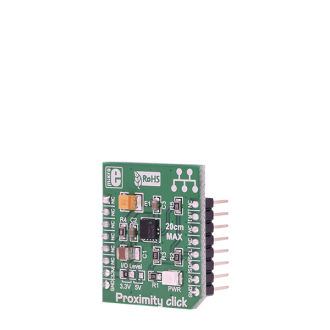
We strongly encourage users to use Package manager for sharing their code on Libstock website, because it boosts your efficiency and leaves the end user with no room for error. [more info]

Rating:
Author: MIKROE
Last Updated: 2018-08-29
Package Version: 1.0.0.1
mikroSDK Library: 1.0.0.0
Category: Proximity
Downloaded: 8429 times
Followed by: 1 user
License: MIT license
Simple demonstration of using VCNL4010 Proximity sensor chip. Example will detect if there is close object to the sensor. It will detect close objects up to 20cm. Also it has light photo pin diode, which will allow user to measure ambient light value.
Do you want to subscribe in order to receive notifications regarding "Proximity click" changes.
Do you want to unsubscribe in order to stop receiving notifications regarding "Proximity click" changes.
Do you want to report abuse regarding "Proximity click".
